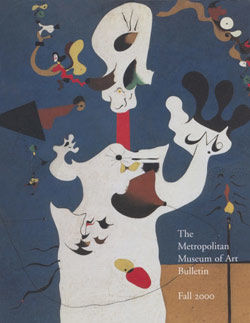[Billboards at Night, Detroit]
Knud Lonberg-Holm American, born Denmark
Not on view
When the German architect Erich Mendelsohn returned from a visit to the United States in 1924, he brought with him a portfolio of remarkable images by Lonberg-Holm, a Danish architect with de Stijl and Constructivist associations. Lonberg-Holm had moved to the States in 1923 and scanned its fabled modernist cities with a fresh European eye and a 35-millimeter handheld Leica. Mendelsohn published Lonberg-Holm's "worm's-eye," bird's-eye, and neon-lit photographs without credit in "Amerika" (1926), his phenomenally successful picture survey of a country made of steel and concrete, electricity and advertisements.
Throughout the 1920s Lonberg-Holm's dazzling "lightscapes" and views of skyscrapers cropped up in design and architecture magazines in Holland, Germany, and Russia; they also appeared in two important sourcebooks on the new photography and clearly influenced the artists Aleksandr Rodchenko and El Lissitzky. By the 1930s, however, Lonberg-Holm had given up architecture for advertising, and his photographs, never signed or dated, no longer circulated. Fortunately, a recent study by architectural historian Marc Dessauce clarifies Lonberg-Holm's precocious contribution to the New Vision. The Museum acquired a spectacular night view of New York City and this glowing paean to electric advertising, together with five other images, from the artist's estate.
Due to rights restrictions, this image cannot be enlarged, viewed at full screen, or downloaded.
![[Billboards at Night, Detroit], Knud Lonberg-Holm (American (born Denmark), 1895–1972), Gelatin silver print](https://images.metmuseum.org/CRDImages/ph/web-additional/DP244488.jpg)

